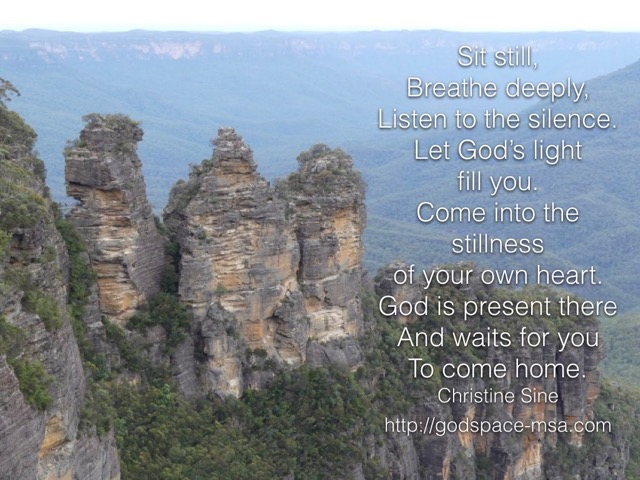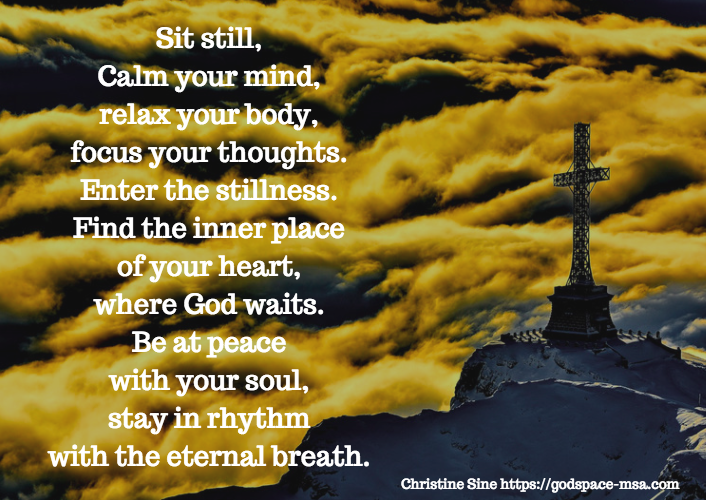We are living in a challenging season. Since the inauguration of a new president, civil discord and angry protests have had many of us oscillating between despair and hope. In the midst of venting our strong feelings we lose the ability to listen to each other, and we increase the conflict and the divide between us. Hope so easily gives way to despair, and faith is replaced by doubt.
Transitions are always uncomfortable, and we need to help our congregations navigate the turbulent waters no matter what their political affiliations may be. Moving from the familiar through the unknown into something new, something that has never been seen before, brings out all of our insecurities. It often creates turmoil, discord and unrest. Restoring our hope in God in times likes these can, however, be a transforming experience.
[Tweet “Restoring our hope in God in times likes these can be a transforming experience.”]
One key to the successful navigation of change is learning to sit still in the presence of God.
I write a lot about our need to sit still, but, to be honest, it is not something I am good at. At least that is what I used to think. I fidget. I move things. I play with my candles, and if I am well enough organized, I knit.
Still Moving
My problem is that I misunderstand the concept of stillness. Stillness does not always mean motionlessness. In fact, there is a whole realm of meditation I am currently exploring called moving meditation, such as liturgical dance. Stillness is more of an inner than outer discipline, an exercise in learning to pay attention to the now rather than the was or the will be.
Meditation and mindfulness are the terms often used for this process today. This process can be a powerful spiritual tool and one that does not require special space, special skills or special devices to make happen. We can all find stillness and enter into the presence of God a hundred times a day.
Becoming Still
Here are some thoughts on how to encourage our congregations to accomplish this stillness. The first three steps of this process make a wonderful “Call to worship” for a church service. These steps can enable people to center their lives on the living God and find an inner peace from which to worship. Some sound a singing bowl as a focus tool for this exercise. I often use processes like this for spiritual retreats and find that people love the combination of reflection and creativity they facilitate. It has amazed me to see how therapeutic and healing such an exercise can be. Make sure you provide plenty of crayons, doodling tools and colouring books for people to work with. You may even want to encourage people to keep a creativity journal in which to write prayers, draw images, or just keep track of the creative inspiration they receive.
Press the pause button.
Sit comfortably with your feet firmly planted on the ground. You might also like to close your eyes. Take a deep breath and exhale, imagining that you are expelling all your anxieties and pressures with that breath. Come to rest, calm your mind, relax your body.
Notice what is now.
What are you thinking of right now? Hold on to that thought and allow it to become the focus of your attention. (For some, looking at an object, real or imagined, may enhance their ability to focus. Others may find that activities like doodling, colouring, writing, knitting or whittling, as I talked about in my last post, bring that thought into greater clarity.) Take a few more deep breaths in and out, deliberately breathing your thought into and out of your body.
Enter the place where God waits.
I love to imagine God waits in my heart for me to enter the inner place of soul quietness, the place where my soul and spirit are at peace with the rhythm of God’s breath. As I enter that place, I find myself spontaneously clasping my hands, closing my eyes and bowing my head. It may last only for a few seconds, but in that brief moment there is a deep and profound connection to the living God.
Contemplate what inspires you.
Writing down and meditating on what I hear God say in these quiet moments is one of the most profound spiritual experiences I have on a regular basis. It keeps me grounded in my faith and inspired in my work. It is here that I often write prayers or start new creative practices for the coming seasons.
Act on what you hear.
The prayers and creative practices that come to me during these times become my focus for future God moments of stillness and contemplation. I don’t always expect such results from my times of stillness, but when they come, they are a gift that I receive with gratitude and continue to thank God for as I use and reuse them.
A Few Examples
Here are a couple of prayers I have written during reflective times just described.


Now, go and find the inner place of your heart, where God waits with the eternal breath.
[Tweet “Find the inner place of your heart, where God waits…”]
Go Deeper in Your Faith Alongside Fellow Missiologists
Share this Post
